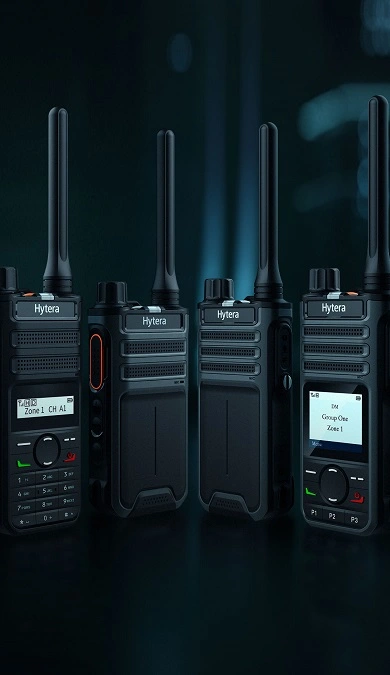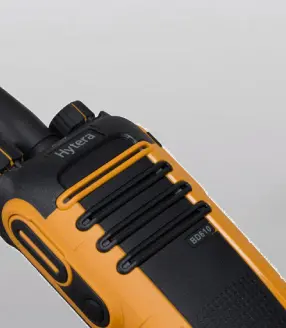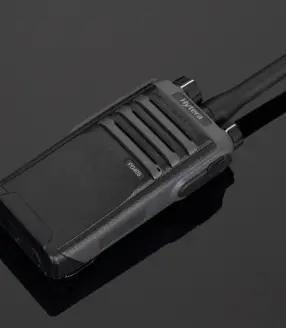
What are Waterproof Walkie-Talkies?
Waterproof walkie-talkies achieve their waterproofing through a combination of design elements and features. They are built with sealed enclosures that prevent water from entering the internal components. These enclosures often incorporate gaskets, O-rings, or other sealing mechanisms to create a tight barrier against water ingress. To achieve this, manufacturers use various techniques to make the walkie-talkies waterproof.

-
Waterproof Housing
This housing is typically made of water-resistant materials, such as rubber or plastic, to prevent water from penetrating the internal components of the walkie-talkie, which could cause damage or malfunction.
-
Waterproof Materials
The buttons and ports on the walkie-talkies are often sealed with rubber gaskets or other waterproof materials to prevent water from entering through these openings. This helps to ensure that the walkie-talkie remains fully functional even when exposed to water.
Overall, the key to making a walkie-talkie waterproof is to ensure that all internal components are protected from water and that any openings or ports are sealed to prevent water from entering.
Hytera Waterproof Walkie-Talkie Solutions

Related Products

Hytera AP/BP Series
Hytera AP/BP Series

Hytera BD Series
Hytera BD Series

Hytera PD4 Series
Hytera PD4 Series


VIDEOS
New Generation Business Radio Series
1:08
Frequently Asked Questions
What are the key benefits of using a waterproof walkie-talkie?
Using a waterproof walkie-talkie offers numerous advantages for individuals and groups engaged in outdoor activities or work environments that involve exposure to water and harsh conditions. The key benefits are as follows:
Enhanced Communication: Waterproof walkie-talkies provide a reliable means of communication, even in wet or challenging terrains, ensuring seamless coordination among team members.
Durability and Longevity: The waterproof design ensures the device's durability, allowing it to withstand accidental drops, exposure to rain, and submersion in water. This extends the lifespan of the walkie-talkie, reducing the need for frequent replacements.
Safety and Emergency Preparedness: In outdoor adventures or hazardous work settings, having a waterproof walkie-talkie is crucial for maintaining contact during emergencies, enhancing safety, and enabling timely assistance if needed.
What features should I consider when choosing a waterproof walkie talkie?
When selecting a waterproof walkie-talkie, certain features are essential to ensure optimal performance and usability. Here are the key considerations:
Waterproof Rating: Check the waterproof rating of the device, usually indicated by an IP (Ingress Protection) code. Look for a higher IP rating, such as IP67, which indicates better water and dust resistance.
Range: Consider the communication range required for your specific use case. Some walkie-talkies offer longer ranges, making them suitable for activities spanning vast areas.
Battery Life: Evaluate the battery capacity and expected battery life of the walkie-talkie. Longer battery life is advantageous, especially for extended trips or shifts.
What are the use scenarios of waterproof walkie-talkies?
Waterproof walkie-talkies find extensive use in various scenarios due to their rugged and durable design. Some of the prominent use scenarios include:
Public Safety Services: Police, firefighters, and other emergency responders use waterproof walkie-talkies to coordinate their actions and respond swiftly to incidents.
Emergency Situations: During emergencies, waterproof walkie-talkies play a crucial role in search and rescue operations, enabling quick response and coordination among rescue teams.
Construction Sites: In noisy and challenging construction environments, waterproof walkie-talkies enable efficient communication among workers, supervisors, and management, improving productivity and safety.
Outdoor Adventures: Whether it's hiking, camping, or trekking, waterproof walkie-talkies provide reliable communication in remote areas where cellular networks might not be available.
Event Management: At large gatherings, festivals, or sports events, waterproof walkie-talkies facilitate effective communication between organizers, staff, and security personnel, ensuring smooth operations.
Can I use a waterproof walkie-talkie for scuba diving?
While waterproof walkie-talkies are designed to withstand water exposure, not all models are suitable for scuba diving. It is crucial to verify the device's specifications and limitations. Here's what you need to know:
Depth Rating: Check the depth rating of the walkie-talkie. For scuba diving, you'll need a model with a significant depth rating, typically exceeding the maximum depth you plan to dive.
Scuba-Specific Features: Some specialized scuba diving walkie-talkies offer additional features, such as compatibility with diving masks or gloves, to enhance ease of use underwater.
Underwater Noise Reduction: Opt for models with advanced noise reduction features to ensure clear communication in the often noisy underwater environment.
How do Waterproof Walkie-Talkies work?
Waterproof walkie talkies work on radio frequencies, using a transmitter and receiver to send and receive signals. They operate on specific channels, allowing users to communicate within a certain range. When a user talks into the walkie talkie, the microphone converts the sound into electrical signals, which are then transmitted through the antenna. On the receiving end, the other walkie talkie's antenna picks up the signals and converts them back into sound, enabling a two-way conversation.
How can I maintain and prolong the life of my waterproof walkie-talkie?
Proper maintenance is essential to maximize the lifespan and performance of your waterproof walkie-talkie. Here are some maintenance tips to follow:
Regular Cleaning: Clean the exterior of the device with a soft, damp cloth to remove dirt, dust, and any contaminants. Avoid using harsh chemicals that might damage the waterproof seals.
Battery Care: Follow the manufacturer's guidelines for charging the battery and avoid overcharging. Replace old batteries with compatible ones when needed.
Storage: When not in use, store the walkie-talkie in a cool, dry place away from direct sunlight and extreme temperatures.



